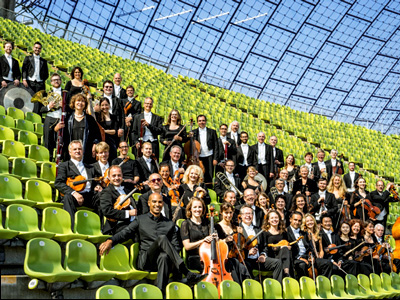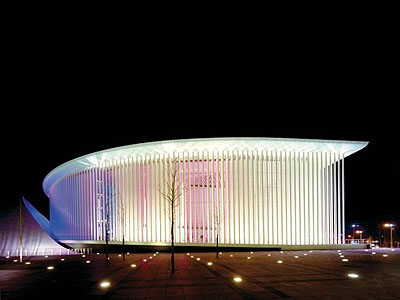By Brian Taylor Goldstein, Esq.
We recently had an incident where the Executive Director of an organization that presented one of our artists gave him a cookie with a controlled substance in it at a reception after the performance. Admittedly, the substance was legal in the presenter’s state, but it made the artist (who was young and didn’t think to ask) very ill. The artist recovered and because nothing serious happened, we didn’t want to make too big of a deal out of it because we frequently book artists with this presenter. However, it got us thinking, are we liable if someone injures one of our artists at an engagement?
As you can imagine, while we have the privilege of working with some of the most respected professionals in the arts industry, we are also often confronted with the denizens of the lower fathoms of the gene pool: from the children’s theater who knowingly hired an actor listed on a sexual predator list (because the Artistic Director agreed to “keep an eye on him”!) to a diva who offered an immigration officer sexual favors in exchange for letting her into the US without a visa (cash would have been more prudent!) And now, we can nominate this Executive Director for this year’s award. He or she has demonstrated not merely a lack of judgment, but a lack of common sense at the most basic and rudimentary level, putting everyone at risk.
Offering an artist, or anyone, candy or food containing any substance not reasonably expected to be in food not only constitutes a reckless disregard for safety, but could also constitute criminal negligence. What if the artist had been on medication that interacted with the illegal substance? Or what if the artist had an allergy? Had, God forbid, the artist died as a result, this would have constituted a felony. It has nothing to do about the legality or illegality of the particular substance. Glass is legal, but you can’t put broken glass into a cupcake without a label saying “Warning, this cupcake contains bits of glass.” The fact that the artist was young and didn’t think to ask is also irrelevant. No one, child or adult, is expected to ask: “Excuse me, are their drugs in this cookie?” It’s one thing if someone is allergic to peanuts or is lactose intolerant. More or less, it’s up to them to make the necessary enquiries. However, it’s another scenario entirely if someone is offered aspirin, snake venom, staples, paper clips, or bat wings—all of which are legal substances—masquerading as common baked goods.
It’s great that the artist recovered and was not seriously ill. And I’m not suggesting that you overreact. However, you also can’t simply ignore the situation. Moreover, as an artist representative with a legal, as well as moral and ethical, duty to protect the interests of your artist above all others, which do you think takes precedence: your own, personal and professional relationship with the presenter or the fact that the presenter could have killed your artist? (Don’t answer this. Its rhetorical.)
You are not liable if one of your artists gets injured at an engagement unless you knowingly expose them to a risk, disregard a negligent or dangerous situation, or otherwise fail to exercise a reasonable duty of care. Assuming you or your organization had no reason to suspect that the Executive Director was dabbling in kitchen chemistry, then you would not be liable. However, should you book another artist with this presenter, and should this same Executive Director offer another artist a “happy cookie”, causing another artist to get sick, and you failed to warn your artist in advance not to eat anything, then by disregarding the prior situation, and knowingly exposing your artist to a potentially dangerous encounter, not only would your organization be liable, but you could be personally liable as well.
At the very least, assuming the presenting organization is a non-profit, you should contact the Chairman of the Board and let them know what happened. It would then be the responsibility of the Board of Directors either to fire the Executive Director or take steps to prevent a future occurrence. If the board decides that having an Executive Director who makes terrible decisions is the right person for the post of ultimate decision maker, and this happens again, then not only would the presenting organization be liable, but the individual members of its Board of Directors could be liable as well. Arts organizations, both for-profit and non-profit, should be organizations that foster, encourage, and support the very best and brightest in our industry, not refuges that provide job security to those who simply can’t find employment elsewhere.
_________________________________________________________________
For additional information and resources on this and other legal and business issues for the performing arts, visit ggartslaw.com
legal and business issues for the performing arts, visit ggartslaw.com
To ask your own question, write to lawanddisorder@musicalamerica.org.
All questions on any topic related to legal and business issues will be welcome. However, please post only general questions or hypotheticals. GG Arts Law reserves the right to alter, edit or, amend questions to focus on specific issues or to avoid names, circumstances, or any information that could be used to identify or embarrass a specific individual or organization. All questions will be posted anonymously and/or posthumously.
__________________________________________________________________
THE OFFICIAL DISCLAIMER:
THIS IS NOT LEGAL ADVICE!
The purpose of this blog is to provide general advice and guidance, not legal advice. Please consult with an attorney familiar with your specific circumstances, facts, challenges, medications, psychiatric disorders, past-lives, karmic debt, and anything else that may impact your situation before drawing any conclusions, deciding upon a course of action, sending a nasty email, filing a lawsuit, or doing anything rash!





Carydis Woos Bamberg
January 4th, 2015By ANDREW POWELL
Published: January 4, 2015
BAMBERG — When the Bamberger Symphoniker replaces its Chefdirigent next year, it could do worse than hiring Constantinos Carydis. The intense but discreet Athenian secured creative and technically superb playing in a Nordic and Impressionist program Nov. 29 here at the Joseph-Keilberth-Saal, confirming skills he has shown in Munich.
Choosing won’t be easy, and there is a preliminary question for this conservative north Bavarian town. Artistry or stability? Bamberg has enjoyed plenty of the latter in incumbent Jonathan Nott, who began in 2000. But unique interpretive approaches are another matter. The Lamborghini-driving British conductor has not forged a strong international profile for the orchestra — Edinburgh performances in 2011, for instance, lacked insight and vigor — and the claim of an “audible leap in quality” under his leadership versus the standards of predecessors Keilberth, Eugen Jochum and Horst Stein is hard to accept.
The job has attractions, not least the direct backing of the orchestra by the Free State of Bavaria, which encourages its deep tradition of touring. (Formed by German musicians expelled from Czechoslovakia, the Bamberger Symphoniker has given 6,500 concerts in 500 cities and still performs mostly away from home.) State broadcaster BR records the ensemble’s work and a few years ago the state helped pay for sound tweaks by Yasuhisa Toyota to its 1,380-seat hall. Built in 1993 with cheap materials and named after Bamberg’s grumpy first Chefdirigent, who held the post from 1950 to 1968, the Joseph-Keilberth-Saal sits on the Regnitz River below a onetime monastery. It probably is “Bavaria’s best concert hall” (another claim) if only because Nuremberg and Munich are so deficient in this regard. The sound is warm, balanced and natural, though high frequencies project relatively feebly.
Carydis, 40, definitely not to be confused with his vain compatriot Teodor Currentzis, 42, will be unlike anyone else the orchestra is considering and may or may not fit Bamberg’s concept of “maestro.” He is selective in the projects he takes on, i.e. not known for a heavy workload. For this debut he was without a jacket and looked disheveled. When in 2011 he was somewhat distressingly handed the Carlos Kleiber Prize — established on Kleiber’s 80th birthday and awarded only once to date, to Carydis — he disappeared for a year’s sabbatical. Not surprisingly he has never held a major music directorship and it is unclear whether he could commit to the scope of such a job. On the other hand, all that he does turns to musical gold. He is highly imaginative and perceptive, meticulous in preparation, equally accomplished in opera and symphonic music, adept in scores by such dissimilar composers as Shostakovich, Falla, Rimsky-Korsakov, Mozart and Offenbach. He is admired where he is best known, in Munich: tomorrow he will conduct a Brahms and Debussy concert, later this month a run of Don Giovanni, and during this summer’s Opernfestspiele a new staging of Pelléas et Mélisande.
This Bamberg concert followed runouts of the same program the previous two evenings in nearby Erlangen and Schweinfurt, part of the orchestra’s duty as a state ensemble. Refinement in the playing, no doubt lifted by repetition, came across immediately in Sibelius’s brute tone poem Tapiola (1926). The conductor reveled in its mostly quiet dynamics, lavishing attention on the woodwinds and propelling its long lines. Loud passages had considerable impact and the sense of purpose never flagged, though tension at times gave way to deathly stillness. In Prélude à l’après-midi d’un faune (1894), which followed, Carydis appeared to let flutist Daniela Koch pace and shape the music. She practiced the virtue of playing gently all through the concert, so that her instrument always sounded exquisite; in the Debussy she was guilefully supported by her woodwind colleagues and flattered by the satiny strings, but at its end it was the conductor’s collaboration she went out of her way to acknowledge.
Nielsen’s brooding nine-minute pastorale for orchestra Pan og Syrinx (1918) opened the second half of the concert as a preamble to Ravel’s Daphnis et Chloé Suites 1 and 2 (1911 and 1913). Like the Ravel, it relies on a sensuous string sound but places the interest in the woodwinds (clarinet and cor anglais personify the protagonists); agitated outbursts prop up the longer ruminative material. The Bamberg musicians achieved delicacy and much expressive character here, and in the Ravel, always with attention to mood. Carydis permitted no applause before Ravel’s opening Nocturne and looked irked that the Danse guerrière — brilliantly controlled, indeed electrifying — caused an eruption of applause before he could proceed into the Second Suite.
No decision date has been publicly set for the Bamberg appointment (in contrast to the Berlin Philharmonic job, for which a successor to a different Briton will be named in May, to start in 2018 after an equal 16-year tenure). If the new chief on the Regnitz can artistically stretch the musicians, as Carydis did on this visit, he or she will have been better chosen than any long-staying routinier.
Photo © Thomas Brill
Related posts:
Mélisande as Hotel Clerk
Wagner, Duke of Erl
Nézet-Séguin: Hit, Miss
Widmann’s Opera Babylon
Tutzing Returns to Brahms
Tags: Bamberg, Bamberg Symphony Orchestra, Bamberger Symphoniker, Commentary, Constantinos Carydis, Daniela Koch, Daphnis et Chloé, Debussy, Jonathan Nott, Joseph Keilberth, Nielsen, Pan og Syrinx, Prélude à l’après-midi d’un faune, Ravel, Review, Sibelius, Tapiola
Posted in Munich Times | Comments Closed